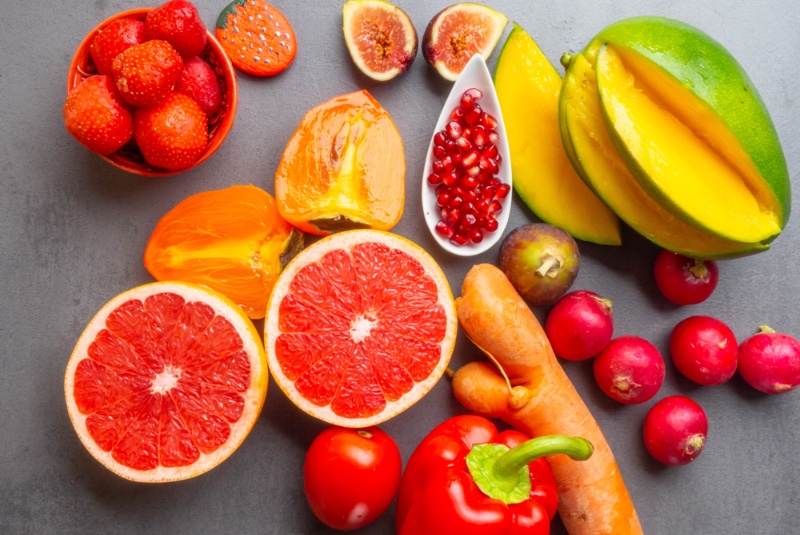Nutrition labels provide key information about the foods we eat, making them essential tools for weight management and healthy eating. Understanding how to read these labels helps you make informed decisions about your diet and choose foods that support your health goals. By learning to decode serving sizes, calories, macronutrients, and ingredients, you can better manage your calorie intake and ensure you’re consuming a balanced, nutritious diet. Whether you’re aiming to lose weight, maintain your current weight, or improve overall health, mastering nutrition labels is a vital skill.
Serving Size: The Foundation of Nutrition Information
One of the first things to notice on a nutrition label is the serving size. This tells you the amount of food that the nutritional information applies to. The entire label’s data, including calories, fat, and nutrients, is based on this portion. It’s crucial to compare the serving size to how much you actually eat. If a food has a serving size of one cup but you eat two cups, you’ll need to double the numbers on the label to get an accurate measure of what you’re consuming. Understanding serving size is key for managing portion control and overall calorie intake.
Calories: Balancing Energy Intake and Weight Management
Calories measure the energy you get from food, and managing your caloric intake is fundamental for weight management. On the label, calories tell you how much energy you’ll consume from one serving. To maintain your weight, you need to balance the number of calories you eat with the number you burn through activity. For weight loss, aim to consume fewer calories than you burn. Keep in mind that not all calories are created equal. Calories from nutrient-dense foods like fruits, vegetables, and whole grains are more beneficial than those from processed foods with added sugars and fats.
Macronutrients: Fats, Carbohydrates, and Proteins
Macronutrients, including fats, carbohydrates, and proteins, are vital components of your diet. Understanding how they appear on nutrition labels helps you make better food choices. Fats are broken down into total fat, saturated fat, and sometimes trans fat. For better health and weight management, limit your intake of saturated and trans fats, which can raise cholesterol and contribute to weight gain. Instead, look for unsaturated fats from sources like olive oil, nuts, and avocados, as they provide essential fatty acids and promote heart health. Carbohydrates are listed as total carbohydrates, with details on dietary fiber and sugars. Choosing foods high in fiber and low in added sugars supports weight management and overall well-being. Fiber helps with digestion, keeps you full, and promotes satiety, while added sugars can lead to weight gain. Protein helps build and repair tissues and supports metabolism. A diet rich in lean proteins from sources like chicken, fish, tofu, and legumes can help manage weight by keeping you full longer.

Daily Value Percentage (%DV)
The % Daily Value (%DV) shows how much of a nutrient in one serving contributes to your overall daily diet, based on a 2,000-calorie-per-day intake. This percentage helps you gauge whether a food is high or low in a particular nutrient. If the %DV is 5% or less, it’s considered low for that nutrient, while 20% or more is considered high. For weight management, aim for foods with a low %DV for saturated fats, trans fats, cholesterol, and sodium, and look for a higher %DV for fiber, vitamins, and minerals. The %DV is a useful tool for quickly identifying whether a food aligns with your dietary needs.
Understanding Added Sugars
One of the most important sections on a nutrition label, especially for weight management, is added sugars. These are sugars added during the processing of foods, commonly found in snacks, desserts, sugary drinks, and many packaged items. Consuming too much added sugar can contribute to weight gain, increased risk of heart disease, and other health problems. Limiting added sugar intake is key to managing your weight. Instead, opt for foods with naturally occurring sugars, like fruits, which also provide fiber, vitamins, and minerals.
Sodium: Watch Your Salt Intake
Excessive sodium intake is linked to high blood pressure and can lead to water retention, which may impact weight management. Nutrition labels list the amount of sodium per serving in milligrams (mg). The recommended daily limit for sodium is about 2,300 mg per day, but many people consume far more than that, especially from processed or packaged foods. For better health, aim for foods with lower sodium levels. Choosing fresh, whole foods and cooking at home gives you more control over sodium intake and supports your weight goals.
Fiber: The Key to Feeling Full and Satisfied
Dietary fiber is a crucial part of a balanced diet and plays an important role in weight management. Fiber-rich foods help you feel fuller for longer, reducing the temptation to overeat. Fiber also aids digestion and helps regulate blood sugar levels. When reading nutrition labels, look for foods with at least 3 grams of fiber per serving, and aim to consume 25-30 grams of fiber daily from sources like fruits, vegetables, whole grains, and legumes. High-fiber foods are more satisfying and help reduce calorie intake, promoting long-term weight control.
Ingredients List: A Closer Look at What’s in Your Food
In addition to the nutritional facts, the ingredients list provides valuable information about what’s actually in the food you’re consuming. Ingredients are listed in order of quantity, from highest to lowest, so the first few ingredients make up the bulk of the product. For weight management, look for short ingredient lists with recognizable whole foods. Avoid products with long lists of artificial additives, preservatives, and processed sugars. Whole ingredients like fruits, vegetables, whole grains, and lean proteins should be the primary components of your diet for optimal weight management and overall health.
Watch for Hidden Calories and Fats
Even seemingly healthy foods can contain hidden sources of calories and unhealthy fats. Items like salad dressings, sauces, and snacks may seem low in calories per serving, but serving sizes can be small, and multiple servings can add up quickly. Pay attention to serving sizes and check for hidden fats like “partially hydrogenated oils,” which indicate the presence of unhealthy trans fats. Being mindful of these hidden calories helps you avoid unintentional overconsumption and better manage your weight.
Portion Control: Understanding Multiple Servings
A common pitfall when reading nutrition labels is underestimating portion sizes. Many packaged foods contain multiple servings, even if the package looks like it’s meant for one meal. Always check the number of servings per container, and if you’re consuming more than one serving, multiply the nutritional information accordingly. Being mindful of portion sizes can help you avoid overeating and better control your calorie intake, especially with snack foods, drinks, and convenience meals.
Reading nutrition labels is a powerful tool for weight management and overall health. By understanding the key components of the label—serving size, calories, macronutrients, fiber, added sugars, and sodium—you can make smarter food choices that align with your dietary goals. Paying attention to portion sizes, % Daily Value, and ingredient lists ensures that you’re consuming nutritious, whole foods while managing calorie intake. With practice, you’ll become more confident in selecting foods that support a balanced, healthy lifestyle.




